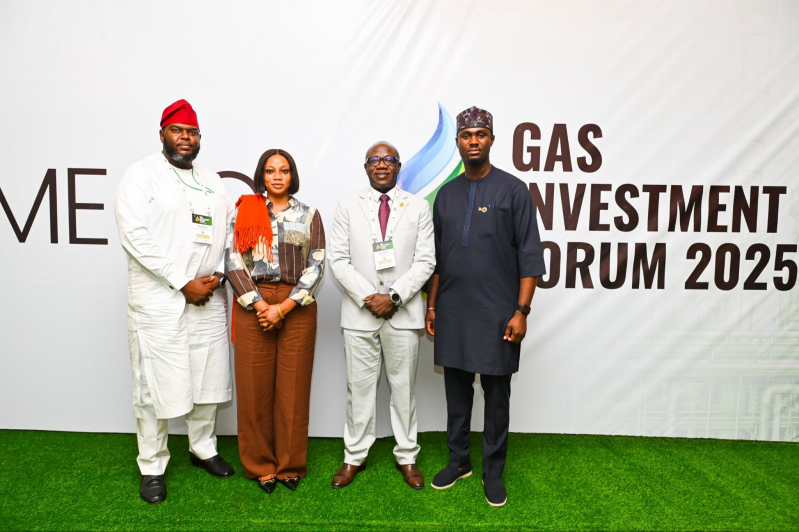
Reported by: Ime Richard Aondofa | Edited by: Henry Owen
Nigeria’s ambition to position itself as Africa’s gas powerhouse received a significant boost as the Nigerian Upstream Petroleum Regulatory Commission (NUPRC) unveiled a comprehensive regulatory roadmap aimed at unlocking over 55 trillion cubic feet (TCF) of uncommitted gas reserves and attracting billions of dollars in new investments across the gas value chain.
Speaking at the 3rd Gas Investment Forum held in Lagos, the Commission’s Chief Executive, Engr. Gbenga Komolafe, represented by the Executive Commissioner, Development and Production, Engr. Enorense Amadasu, highlighted ongoing reforms and policy instruments that continue to shape the nation’s gas industry.
According to him, Nigeria’s proven gas reserves currently stand at 210.54 TCF, comprising 109.51 TCF of Non-Associated Gas (NAG) and 101.03 TCF of Associated Gas (AG). Of this, about 55 TCF—representing 26 percent—remains uncommitted to existing or planned monetisation projects, signalling vast opportunities for both local and foreign investors.
Since the enactment of the Petroleum Industry Act (PIA), the Commission has approved over 25 Non-Associated Gas Field Development Plans, unlocking nearly 9,790 BSCF of reserves and 3.54 BSCF/D of gas, while attracting over $4.9 billion in CAPEX investments.
Amadasu stated that Nigeria’s annual average daily gas production stands at 6.99 billion standard cubic feet (BSCF/D) in 2024, with a Reserves Replacement Ratio (RRR) of 1.56 and a Reserves Life Index (RLI) of 92.7 years—a strong indicator of long-term sustainability and investor confidence in the gas sector.
The Commission also revealed steady growth in gas production and utilisation, with reserves increasing from 208.83 TCF in 2023 to 210.54 TCF in 2025, and gas production rising from 6.91 BSCF/D to 7.61 BSCF/D. The domestic market currently absorbs 28 percent of total gas output, while 35 percent is exported via LNG and WAGP, and 29 percent is utilised in-field for gas lift and reinjection.
On policy reforms, Amadasu listed landmark regulatory milestones such as the Associated Gas Re-injection Act (1979), National Gas Policy (2008), Flare Gas (Prevention of Waste and Pollution) Regulations (2018), and the PIA 2021. More recent frameworks—like the Domestic Gas Delivery Obligation Regulations (2022), Gas Flaring, Venting and Methane Emissions Regulations (2023), and Oil and Gas Companies (Tax Incentives) Order (2024)—further reinforce NUPRC’s commitment to creating a competitive and investor-friendly gas environment.
The Commission is also facilitating approvals and negotiations for major upstream gas supply projects, including NLNG Train 7, the Ajaokuta–Kaduna–Kano (AKK) Pipeline, and the Brass Fertilizer and Petrochemical Project.
Amadasu disclosed that NUPRC is currently monitoring 19 active gas development projects, comprising 10 production facilities and 9 pipeline projects with a combined capacity of 3.55 BSCF/D. About 88 percent of these are in the engineering phase, while 12 percent have advanced to construction or fabrication.
He added that 86 percent of new gas production projects are designed for export markets, mainly feed gas supply to the Nigerian LNG, while 23 percent (142 MMSCFD) will serve the domestic market to strengthen local energy availability and industrial growth.
📩 Stone Reporters News | 🌍 stonereportersnews.com | ✉️ info@stonereportersnews.com
📘 Facebook: Stone Reporters | 🐦 X (Twitter): @StoneReportNew
Would you like me to make a shorter version (about 120–150 words) suitable for your website homepage or headline summary section?


Add comment
Comments